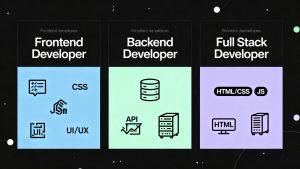Frontend development is experiencing rapid transformation in 2025, marked by the integration of AI technology, expanded engineering roles, and groundbreaking advancements in both languages and tooling. The distinction between frontend and backend is continuing to blur, prompting engineers to broaden their expertise and adopt more holistic approaches to web applications.
Expanding Responsibilities for Engineers
Today’s frontend engineers are tasked with much more than foundational HTML and CSS. They are often managing server-side rendering, orchestrating application state across platforms, resolving API complexities, and monitoring site performance. Modern frameworks such as Next.js, SvelteKit, and Remix demand a hybrid mindset, requiring engineers to operate seamlessly across the full technology stack. Success in this evolving landscape means understanding how code influences user experience, accessibility, scalability, and core business outcomes.
The Next Evolution of CSS
CSS has matured into a dynamic layout engine, empowered by innovations like Container Queries, Cascade Layers, the @scope rule, and native mathematical functions. Developers are quickly embracing these tools, leading to leaner, more maintainable codebases and a resurgence of interest in vanilla CSS over dependency-heavy solutions. Adopting these native CSS capabilities allows for faster interface development and minimizes reliance on external libraries, signaling a pivotal shift for frontend practices.
AI in the Developer’s Workflow
Artificial intelligence has become an indispensable asset for frontend professionals. Instead of replacing human developers, AI-driven solutions such as GitHub Copilot and advanced code assistants are designed to streamline everyday tasks: generating components, writing tests, scaffolding code, and identifying accessibility or performance concerns. The most effective engineers leverage AI as an acceleration tool, allowing them to devote more energy to architectural decisions, UX refinement, and innovation.
Navigating Real Challenges: Specialization and Complacency
While technological advances bring new opportunities, they also highlight the risks of over-specialization and complacency. The frontend environment evolves rapidly; clinging to outdated workflows or narrowly focusing on a single framework limits long-term career growth. In 2025, engineers who excel are those who bridge traditionally separate domains—combining design sensibility with coding acumen, and integrating product objectives with technology choices. An adaptive, continuous learning mindset has become a crucial attribute for remaining relevant.
Growth and Opportunity Ahead
The demand for high-performance, scalable, and accessible interfaces continues to increase. Businesses are investing more in frontend engineering, recognizing its decisive impact on user engagement, site performance, and conversion rates. Frontend engineers now play a central role on product teams, equipped with better tools and greater influence in shaping business success.
Practical Strategies for Future-Proofing
- Develop system-wide thinking by deepening knowledge of data flows, backend APIs, and advanced rendering methods.
- Master the next generation of CSS, using native features to simplify and enhance layouts.
- Integrate AI tools early in workflows to accelerate development and resolve challenges efficiently.
- Maintain a focus on performance by prioritizing accessibility, responsive design, and Core Web Vitals.
- Remain open to new technologies—experiment often, study specifications, and never stop expanding skills.
Frontend development in 2025 is not losing relevance; it is expanding in both power and significance. Engineers poised for success are those who proactively adapt, bridge gaps between domains, and leverage new technologies to shape the future of digital experiences.
Read more such articles from our Newsletter here.



